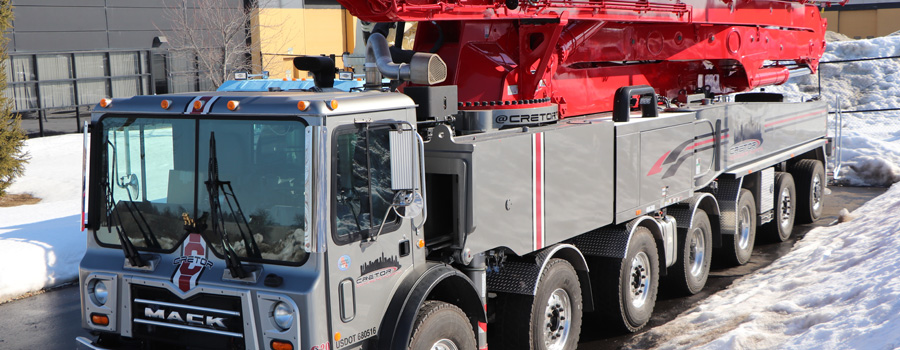Blog Post

In the realm of construction projects, time is money. Efficiency and productivity are crucial factors that can make or break a project's success. When it comes to concrete pouring, traditional manual methods can be labor-intensive and time-consuming. However, there's a game-changing solution available: line pump concrete. This advanced technology revolutionizes the concrete pouring process, offering numerous benefits that save time, enhance efficiency, and ensure high-quality results.
Speed and Efficiency
Line pump concrete offers a significant advantage in terms of speed and efficiency. Unlike manual pouring, which requires workers to physically transport and pour concrete, line pumps eliminate the need for such strenuous labor. Instead, a flexible hose is used to transport concrete directly from the mixer to the desired location, even in hard-to-reach areas. This streamlined process reduces the time and effort required for concrete placement, resulting in faster completion of projects. Line pumps also enable continuous pouring, minimizing interruptions and ensuring a smooth, consistent flow of concrete. The increased efficiency allows construction teams to tackle larger volumes of concrete in shorter timeframes, optimizing productivity and reducing overall project durations.
Precision and Versatility
Line pump concrete offers exceptional precision in concrete placement. The flexible hose allows for accurate and targeted pouring, ensuring the concrete reaches the desired locations with minimal waste or spillage. This precision is particularly beneficial when pouring concrete into intricate forms, around obstacles, or at different elevations. Line pumps are highly versatile and can be used in a wide range of construction applications, including residential, commercial, and industrial projects. From building foundations and floors to walls and sidewalks, line pump concrete can handle various project requirements, adapting to different job site conditions effortlessly. The ability to reach inaccessible areas and maneuver around obstacles makes line pumps an ideal choice for projects with limited space or challenging terrain.
Labor and Cost Savings
Manual concrete pouring involves a considerable amount of labor, requiring a team of workers to transport, pour, and level the concrete. This labor-intensive process not only consumes valuable time but also increases project costs. Line pump concrete eliminates the need for excessive manual labor, significantly reducing the number of workers required on-site. With line pumps, a small crew can efficiently handle the entire concrete pouring process, reallocating labor resources to other critical tasks. The reduced labor requirements translate into cost savings, as fewer workers are needed, reducing labor expenses and associated overhead costs. Additionally, the faster completion time made possible by line pump concrete reduces project durations, minimizing expenses related to equipment rentals and project management, further enhancing overall cost-effectiveness.
Conclusion
In the fast-paced world of construction, time is of the essence. Line pump concrete emerges as a game-changer, offering significant advantages over manual pouring methods. The speed, efficiency, precision, and versatility of line pump concrete revolutionize the concrete placement process, allowing projects to be completed faster, more accurately, and with reduced labor and costs. Embracing this innovative technology can provide a competitive edge in the construction industry, maximizing productivity, and ensuring high-quality results. By choosing line pump concrete, construction professionals can save time, streamline operations, and boost efficiency, ultimately leading to successful project outcomes and satisfied clients.